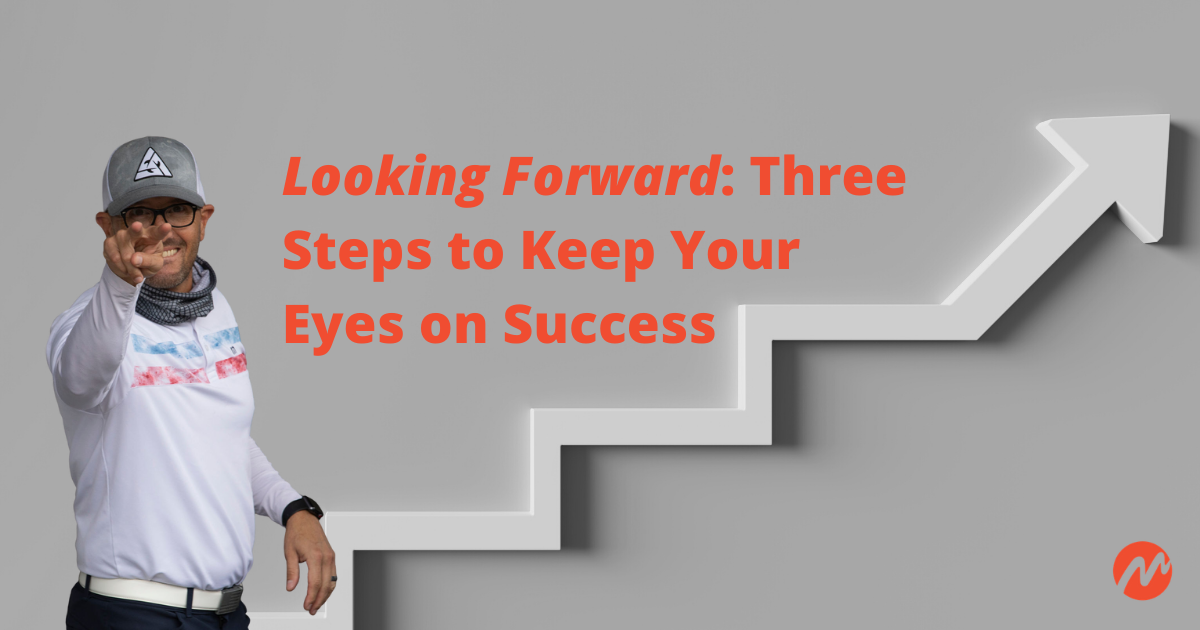
This is my third blog article in a series about my favorite topics: failure and the mindset you need when overcoming it. But you won’t see the word failure in this title. That’s because we will finish this series focusing on what you can take away from failure – success, and stories to share.
I’ve previously written about what it means to have a Growth Mindset and how you can view failures as a positive – by Failing Forward. After you have begun to view your trials and failures as assets – and I genuinely believe failures should be viewed that way – you are ready to build on those assets and share their value with others. You can use these three steps to get there.
Step 1: Identify Your Take-Away
With every perceived failure, you have an opportunity. What did you learn? What can you take away from this experience? As I previously shared, I played many sports in my life, but I was on the smaller side. When I was knocked down, I focused on what I could learn from the experience. How could I be faster and avoid being knocked down? How could I play smarter?
Looking at setbacks this way will allow you to develop an enviable set of skills. You know what to do when Challenge X happens. You’ve been there, and you are a master. Your take-away is newfound expertise in the subject. And when Challenge Y comes? You’ll welcome that, too, because you know you can make an asset out of it. Now that kind of attitude is what I want for my team.
Your first step is, therefore, to find your take-away. What have you learned that allows you to keep your eyes focused on the prize ahead – your long-term success? What experience have you added to your list of assets? Viewing challenges this way changes everything. And it allows you to turn these hurdles into opportunities.
Step 2: Discover Your Wabi-Sabi
The Japanese have a phrase for finding beauty in imperfection: wabi-sabi. The concept can be likened to looking at a chipped vase and finding it more interesting because of the chip. Or viewing an older woman or man as more beautiful because of their age.
The Japanese value these imperfections so much; they have a centuries-old tradition of restoring broken pottery with gold that quite literally illuminates the imperfection. They call it kintsugi – or “joining with gold.” Where we might instinctively reach for superglue to fix a broken vase, the Japanese will use gold to repair the vase, further illustrating that while the vase suffered a break, it is now restored to a more beautiful state.
Can you view your experiences – your hurdles, your failures, and your lessons – as beautiful? Can you find the beauty in imperfection? Your wabi-sabi?
You wouldn’t hire a college recruit as a CEO. You want someone seasoned, someone, who has failed but picked themselves (and their company) up again. You want the wisdom that comes from overcoming challenges and failures. That is the beauty of the experience. That is beauty in imperfection.
This is the second step you should employ when keeping your eyes on success. Remember the value of hurdles and lessons. Find your wabi-sabi. These beautiful hurdles – these setbacks – will point you to a better future – especially if you let them and view them as such.
Step 3: Be Proud of Your Setbacks, and Share Them!
Finally, I want you to take your hurdles – your perceived failures – and make them part of your narrative. Don’t think of past mistakes as if they are to be hidden – like a crack repaired with superglue. These experiences are beautiful, and you should allow yourself to be proud of them. Hiding them leads to shame. And there’s nothing to be ashamed of.
You tried. You were met with obstacles. But you picked yourself up and persevered. Take a moment to realize how many others would not have come this far. And go at it again because a person who falls and gets back up is far stronger than one who never fell in the first place.
And do you want to go one step further? Mentor others. The greatest coaches and leaders are those who share how they tripped but got back up. They were sacked, but they learned how to outsmart their opponents in the process better.
I encourage you to share your knowledge. Share your assets. And part of those assets – perhaps the most beautiful assets you have – are your stories of setbacks and perseverance. That’s the kind of authentic leader I want on my team. And I know those are the leaders that achieve success.
Now, Go Forth and Conquer!
#LetsGo
